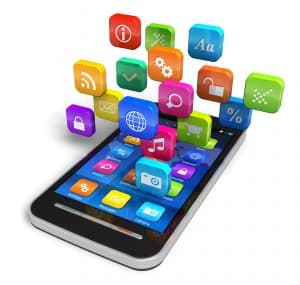Flutter is becoming an increasingly popular choice for developers who want to develop cross-platform applications easily. As a result, many big companies are looking to hire Flutter experts to rise in this highly competitive market. And while it has created a lot of hype around the world, Flutter is still relatively new, and many people have yet to learn what it is and how to get started.
In this guide, we will dive deeply into the basics of Flutter to discover what it is, what it does, and how to get started with Flutter as a total beginner. So, please put on your smarty caps, and let’s get started.
What Is Flutter?
I am sure many of you have heard about Flutter being this new big thing that you can use to create apps, websites, and even elaborate mobile games like Call of Duty Mobile and Clash of Clans with elaborate accounts, and well, that’s true. However, Flutter is Google’s very own Open Source framework that allows developers to create multiplatform apps for Android and IOS with plans to even support desktop applications in the near future.
And that’s one of the main reasons why so many developers are switching from other platforms and frameworks such as React Native and Android Studio to Flutter because it essentially cuts the work time in half by letting you code applications that can support both IOS and Android devices. This also saves companies hundreds of thousands of dollars every month by having a single developer working on apps for multiple platforms.
What Language Is Used In Flutter?
This is one of the most common questions asked by people who want to get started with Flutter for the right reasons. Flutter, unlike many others, uses a programming language called Dart. For those new to Dart, it’s a client-optimized programming language developed by Google, which is used to create fast applications on several different platforms.
Much like C++, Dart is an object-oriented programming language that is also web-based, which makes it easy to be compiled into Javascript to develop browser applications. As a result, it’s fairly easy to learn for developers who have already worked with C and C++.
How To Get Started With Flutter?
Unlike many other frameworks, Flutter is super easy to get started with. All you need to do is follow these basic steps to set up Flutter for the very first time.
- First, you need to Download and Install Flutter.
- Once the Installation is finished, you will need some kind of IDE. You can use Android Studio or Visual Studio Code, whichever you prefer.
- For Android Studio, you will need to install Flutter and Dart plugins.
- For Visual Studio Code, you simply need to install the Flutter extension.
- That’s all. Now you can go ahead and create your very first project using Flutter.
How To Create Your First App With Flutter?
Now that you have got your Flutter all set up, you can go ahead and create your very first project. Just follow these simple steps to do so.
Create A New Project
The very first thing you need to do is simply open up your terminal window, navigate to where you want to create your project, and run this command:
$ Flutter create hello_flutter
Then change the project directory:
$ cd hello_flutter
Open The Project
Now open up the project using the IDE of your choice. For example, for Visual Studio Code, you need to open the Run and Debug, select Dart and Flutter from the dropdown menu, and then the hello_flutter you created.
You will also need to choose whether you are working on Android, IOS, or Browser applications. Once you have done that, all you need to do is press the green Play Button.
Code Away
Now all that’s left to do is open up the lib/main. Dart and start coding your very first application.
Best Flutter Features
There are many reasons why so many developers are moving to Flutter from other platforms. And to give you some idea, here’s a list of some of the best features of Flutter:
- Flutter lets you code once and create applications for multiple platforms without making any changes.
- Instead of android XML, Flutter gives you the tools to build robust and smooth UI using sets of widgets from material design and Cupertino pack.
- Flutter uses hot reloads to let you visualize the changes in real-time, reducing the time it takes to develop and bug fix.
- The framework uses the Dart language, which is popular for its high performance and quick run-ups.
- Flutter uses Native ARM machine code, which allows native performance on Android and IOS devices.
- Coming from Google, Flutter has a ton of video tutorials to help you learn fast.
